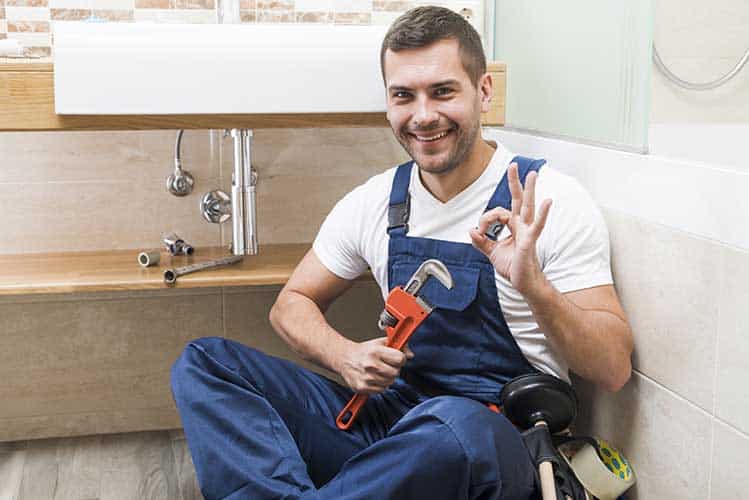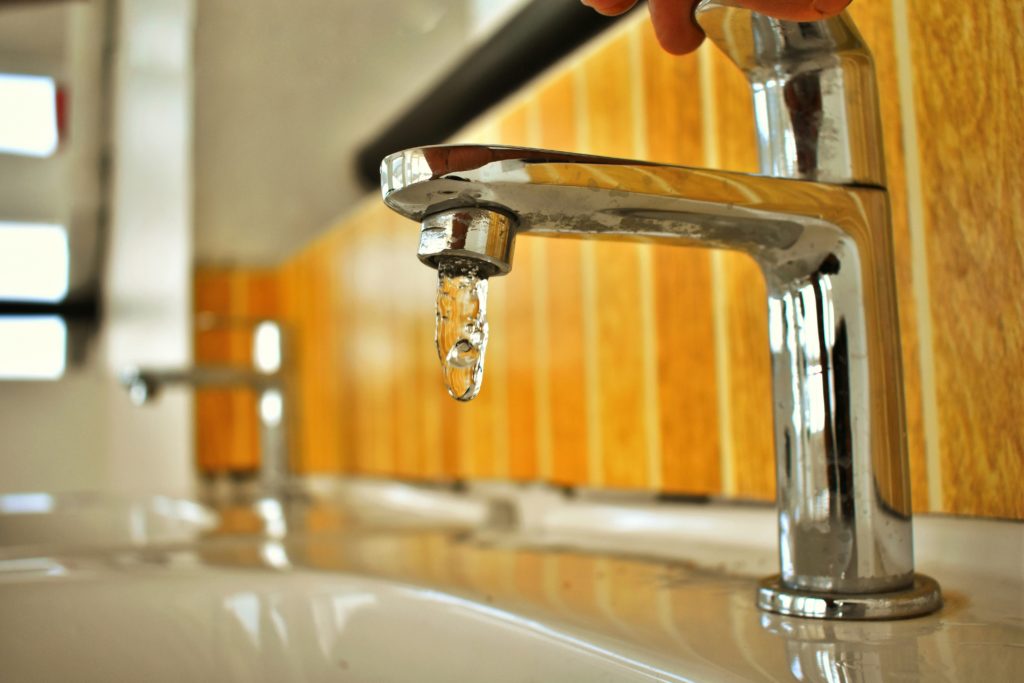Green Piping Alternatives: Improving Your Home's Green Footprint
Green Piping Alternatives: Improving Your Home's Green Footprint
Blog Article
Just how do you feel on the subject of Eco-Friendly Plumbing Practices for a Greener Home?

Intro
In today's globe, sustainable living is becoming significantly important. One area where house owners can make a significant impact is through green pipes solutions. By adopting ecologically mindful techniques, houses can decrease their water and energy usage while contributing to a much healthier world.
Water-Efficient Fixtures
Traditional components typically drainage needlessly. Nevertheless, modern-day low-flow bathrooms, faucets, and showerheads are designed to lessen water use without giving up performance. These fixtures can significantly decrease home water consumption, leading to lower water bills and a reduced environmental footprint.
Greywater Equipments
Greywater refers to gently made use of water from resources such as showers, sinks, and washing equipments. Rather than letting this water go to waste, greywater systems reuse it for non-potable usages such as landscape irrigation and commode flushing. By carrying out a greywater system, property owners can preserve fresh water resources and minimize pressure on local wastewater therapy facilities.
Rain Harvesting
Rain gathering includes collecting and saving rainwater for various purposes, including irrigation, toilet flushing, and laundry. Rainwater harvesting systems normally contain a collection surface area (such as a roof covering), seamless gutters, downspouts, and tank. By gathering rain, homeowners can minimize their reliance on metropolitan water sources and save fresh water resources.
Solar Water Heaters
Typical water heaters depend on fossil fuels or electricity to warm water, adding to carbon emissions and power consumption. In contrast, solar hot water heater utilize sunlight to warm water, providing a renewable and eco-friendly alternative. By using solar energy, house owners can decrease their power expenses and decrease their carbon footprint.
Eco-friendly Pipeline Materials
Standard plumbing products such as copper and PVC can have adverse ecological effects during production and disposal. Nevertheless, there are lasting alternatives offered, such as recycled steel, cross-linked polyethylene (PEX), and high-density polyethylene (HDPE). These green pipe products supply toughness, longevity, and lowered environmental impact.
Energy-Efficient Devices
Along with water-efficient components, energy-efficient devices can better lower a household's environmental footprint. High-efficiency washing machines and dishwashers use less water and energy per cycle, aiding to conserve resources and reduced energy expenses. When shopping for appliances, search for ENERGY STAR ® licensed models for optimal effectiveness.
Smart Water Administration Solution
Advancements in technology have actually made it simpler than ever before to keep an eye on and optimize water usage in the home. Smart water monitoring systems utilize sensing units and data analytics to track water usage in real-time, determine leakages, and provide insights for conservation. By implementing smart water administration solutions, house owners can decrease waste and make the most of efficiency.
Cost Factors to consider
While green pipes alternatives might have higher ahead of time expenses than typical alternatives, they frequently provide long-lasting cost savings with decreased water and power costs. Furthermore, several governments offer rewards such as rebates and tax obligation credit reports for environment-friendly upgrades, aiding to balance out initial expenditures.
Installment and Maintenance
Proper installation and normal maintenance are vital for guaranteeing the performance and durability of green plumbing systems. It is very important to work with competent specialists to mount and service these systems to avoid problems and optimize efficiency. Regular maintenance jobs such as looking for leaks and cleansing filters can likewise help avoid problems and maximize performance.
Ecological Advantages
The ecological advantages of environment-friendly pipes are considerable. By saving water and energy, house owners can lower their carbon impact and decrease their effect on natural resources. In addition, green plumbing practices can help shield ecosystems and protect biodiversity for future generations.
Health Perks
In addition to environmental advantages, green pipes can also add to improved interior air top quality and health and wellness. By utilizing non-toxic materials and lessening chemical direct exposure, property owners can produce a much healthier living setting on their own and their families.
Government Rewards
Lots of federal governments use economic motivations to urge homeowners to adopt environmentally friendly plumbing practices. These motivations might include rebates, tax credit scores, and low-interest lendings for energy-efficient upgrades. By benefiting from these programs, home owners can make green improvements a lot more affordable and easily accessible.
Verdict
In conclusion, environmentally friendly pipes choices provide various benefits for home owners and the setting alike. By purchasing water-efficient fixtures, greywater systems, rain harvesting, solar hot water heater, eco-friendly pipe materials, energy-efficient home appliances, smart water monitoring systems, and other sustainable services, families can lower their ecological impact, lower their utility costs, and add to a much healthier planet for future generations.
Eco-Friendly Plumbing: Transform Your Home with Sustainable Plumbing Options
Understanding Eco-Friendly Plumbing System
At its core, eco-friendly plumbing is all about minimizing water and energy consumption in your home. It’s a green plumbing revolution changing how we think about our water supply and energy use. It offers many options for homeowners, whether you’re upgrading your home or dealing with an older home. By making these changes, you can help the environment, save money on your water and electricity bills, and create a greener, more sustainable home. So, read on to learn how to use eco-friendly plumbing solutions today.
Low Flow Fixtures: A Key to Water Conservation
One of the cornerstones of eco friendly plumbing is the use of low-flow fixtures. These fixtures, which include faucets, showerheads, and toilets, are designed to use much less water than their traditional counterparts. For instance, low-flow showerheads use significantly less water per minute than a standard showerhead without compromising the quality of your shower.
Low-flow toilets are another excellent example of water-saving options. They use fewer gallons of water per flush, making them a more water-efficient choice. By reducing your water usage, these fixtures contribute to a greener home and substantial savings on your water bills.
Maintaining an Eco-Friendly Plumbing System
Another critical aspect of eco-friendly plumbing is addressing water leaks promptly. A small water leak can waste much water over time, leading to water damage and increased water bills.
Regularly checking your plumbing system and fixing leaks can help save gallons of water and reduce your water bills.
Tankless Water Heaters: Hot Water When You Need It
Tankless water heaters, a popular choice in eco-friendly plumbing, are a revolutionary way to heat water in your home. Unlike traditional water heaters that constantly heat a tank of water, tankless water heaters operate on an on-demand basis. This means they only use energy when you need hot water, making them a more energy-efficient option.
This innovative approach to heating water can significantly reduce the energy your home uses. Traditional water heaters constantly work to keep a water tank heated, which requires much energy. In contrast, tankless water heaters heat water when needed, reducing energy consumption and saving money on energy bills. This is a great way to make your home more eco-friendly and embrace an eco-friendly lifestyle.
Insulating Water Pipes: Maximizing Energy Efficiency
Insulating your water pipes is another effective method in eco-friendly plumbing. Proper insulation can prevent heat loss, ensuring your hot water remains hot as it travels from your water heater to your faucet or showerhead. This means your water heater won’t have to work as hard to heat the water, thus saving energy.
For instance, insulating your water pipes can further enhance energy efficiency if you’re using a tankless water heater, which heats water only when needed. This is because the insulation reduces the heat lost as the hot water travels through the pipes, meaning the heater uses less energy to bring the water to the desired temperature.
Dual Flush Toilets: A Water Saving Option
Dual flush toilets are another excellent eco-friendly plumbing option that can help you save water. These toilets offer two flush options: one for liquid waste and one for solid waste. The liquid waste option uses less water than solid waste, allowing you to choose the water flow for each flush based on your needs.
Using less water for liquid waste, dual flush toilets can save thousands of gallons per year compared to traditional bathrooms. This can lead to significant savings on your water bills and contribute to a more sustainable and eco-friendly home.
Touchless Faucets: Saving Water With a Wave of Hand
Touchless faucets are a modern, eco-friendly plumbing option that can help reduce unnecessary water use. These faucets use motion sensors to turn on and off, meaning they only use water when you need it.
This can be particularly useful in the kitchen, where your hands might be full or dirty. Instead of leaving the water running while you handle food or clean dishes, the faucet will only run when your hand comes near the sensor. This reduces water flow and helps you use less water than traditional faucets, contributing to a more eco-friendly lifestyle.
Eco-Friendly Pipes: Eco-Friendly Plumbing Options
When considering eco-friendly plumbing options, paying attention to the materials used in your plumbing system is essential. Some pipes, like those made from copper or stainless steel, are recyclable and more environmentally friendly than PVC pipes. Choosing eco-friendly materials for your pipes can reduce your home’s environmental impact and create a more sustainable plumbing system. By making these small changes, you can make a big difference in your home’s eco-friendliness.
Eco-Friendly Plumbing: Make Your Home Greener
Switching to eco-friendly plumbing options can have a significant positive impact on the environment and your wallet. Not only can these changes reduce your water and energy consumption, but they can also help prevent water waste and damage, contributing to a healthier planet.
Eco-friendly plumbing is more than just a trend; it’s a lifestyle change contributing to a more sustainable future. By making these changes in your home, you can help the planet while saving money on your water and energy bills.
https://intownplumbingtx.com/articles/eco-friendly-plumbing/

I'm very curious about Sustainable plumbing solutions for your home tips and I am praying you appreciated the entire blog entry. Please take a moment to distribute this blog entry if you appreciated it. Thank you for your time. Come back soon.
Click Here Report this page